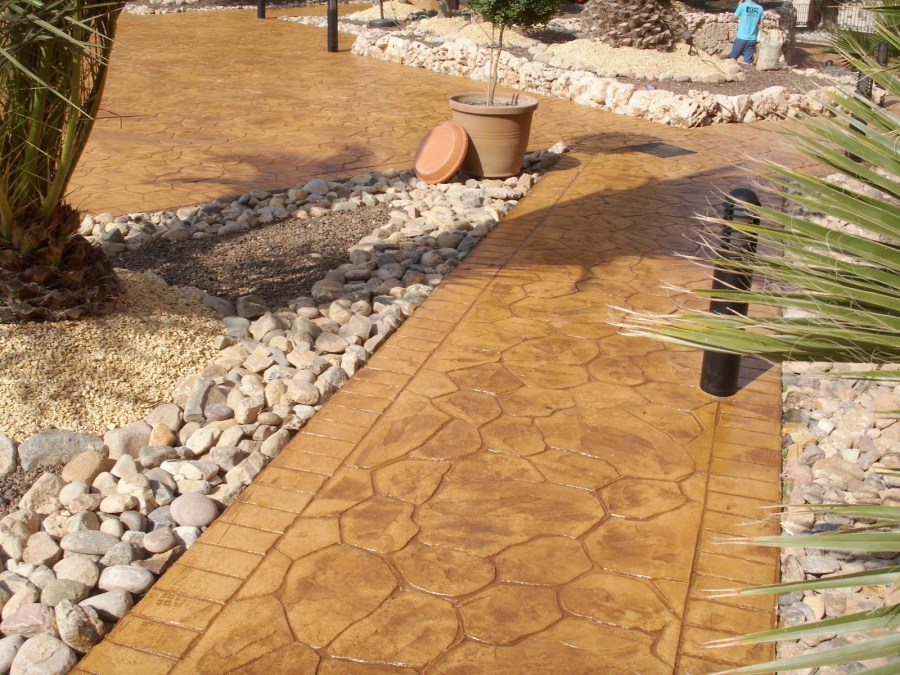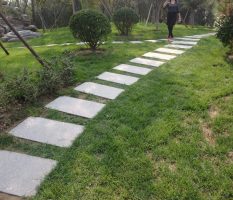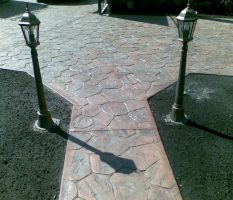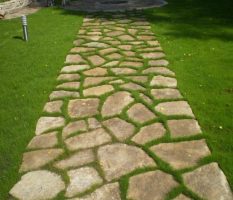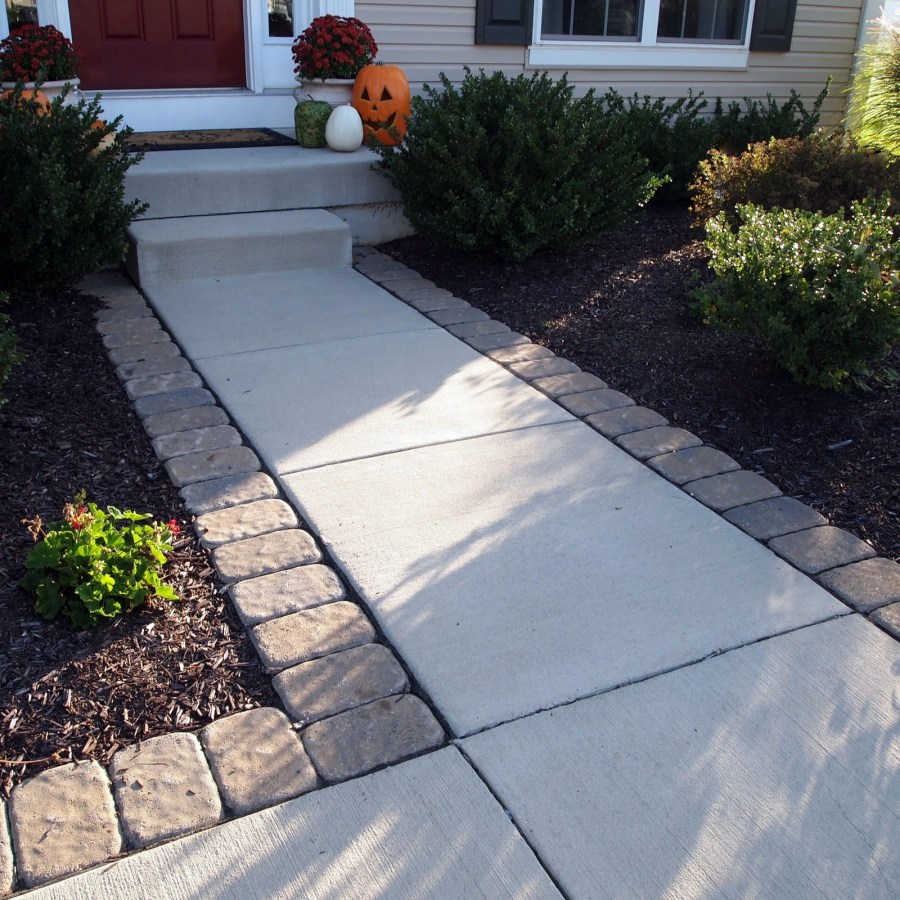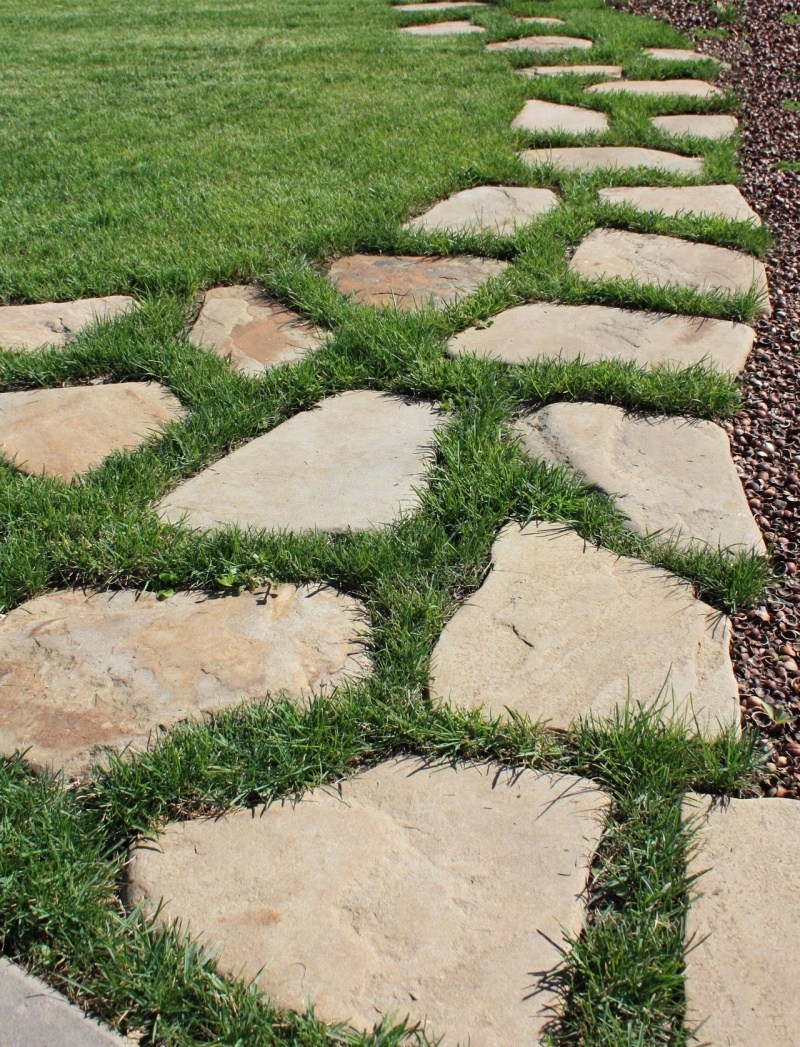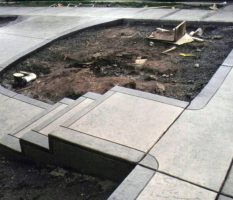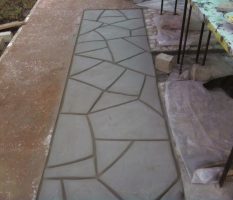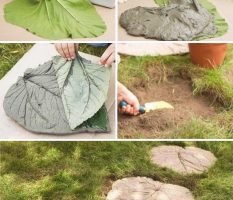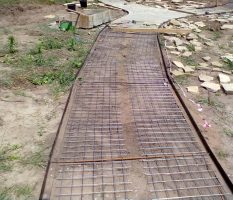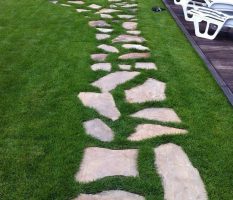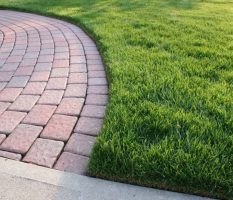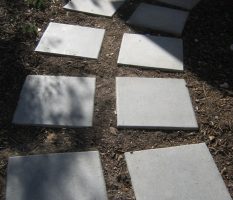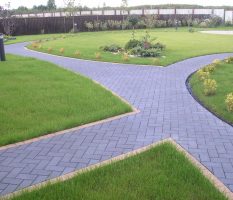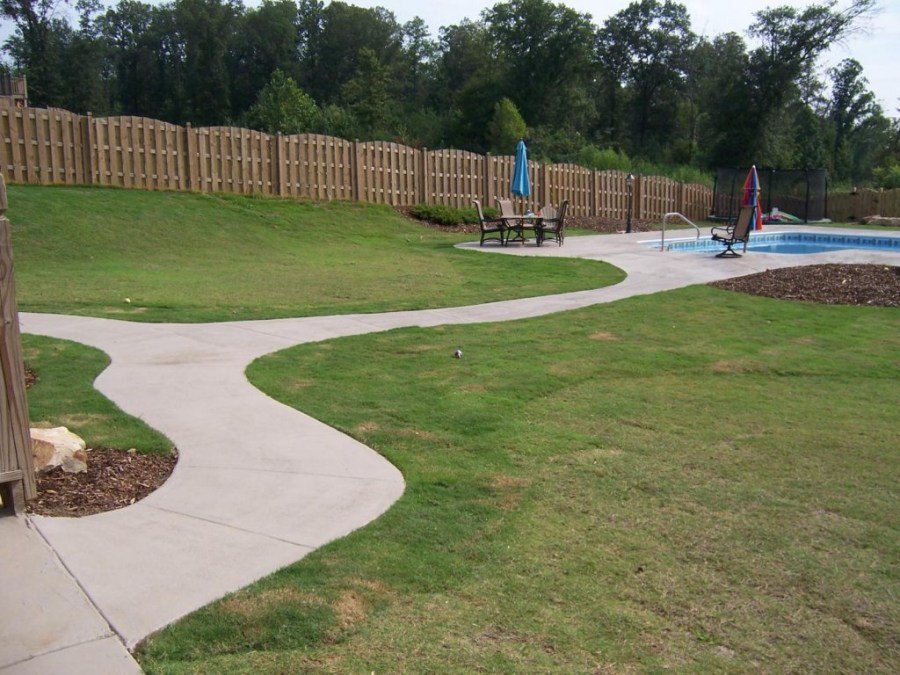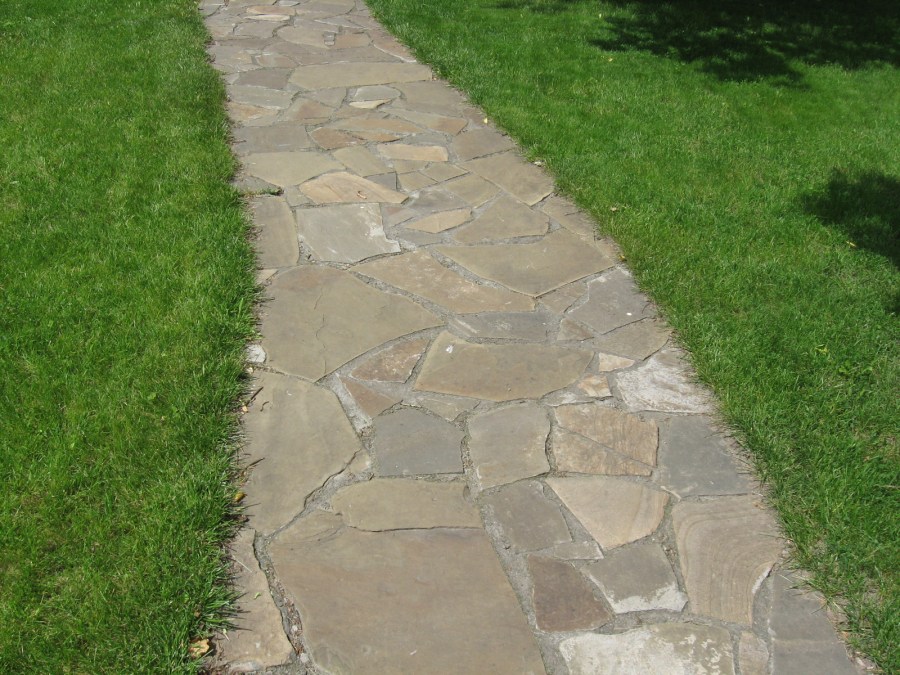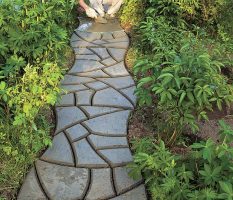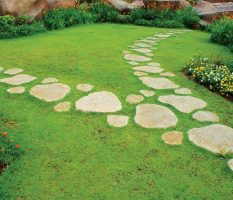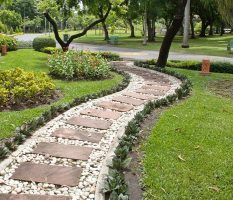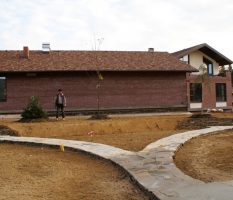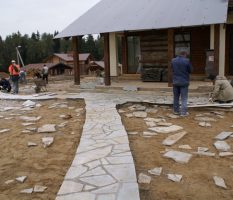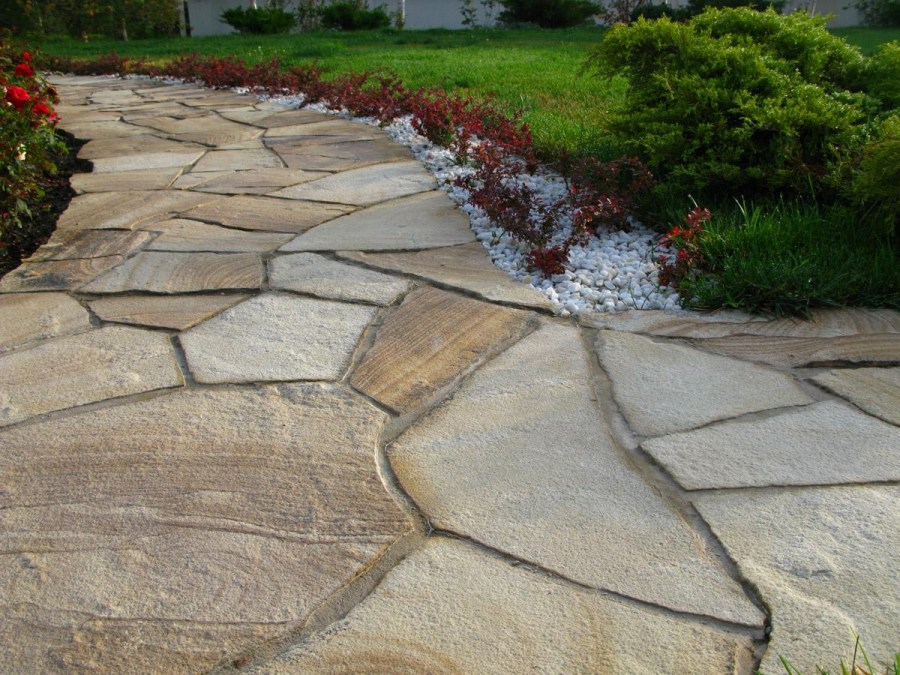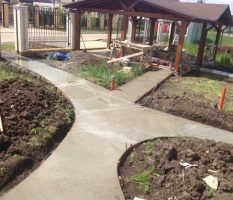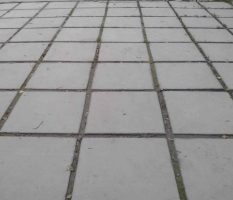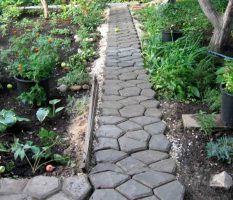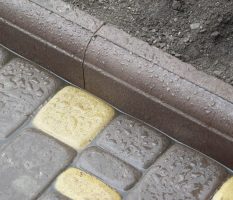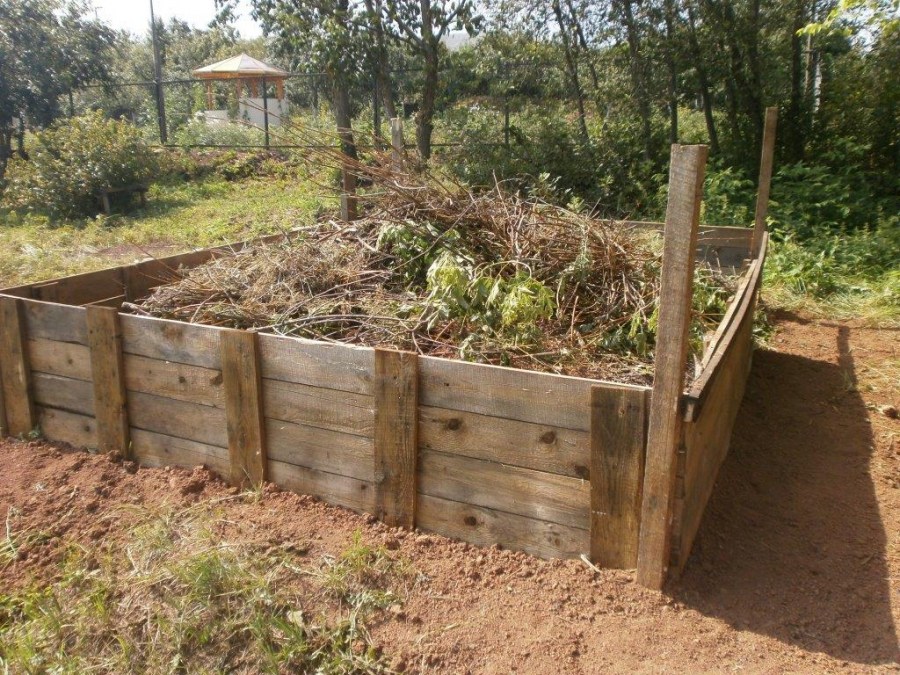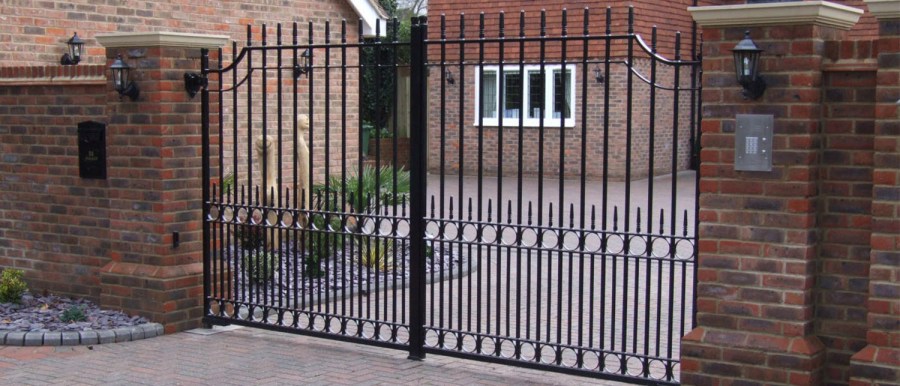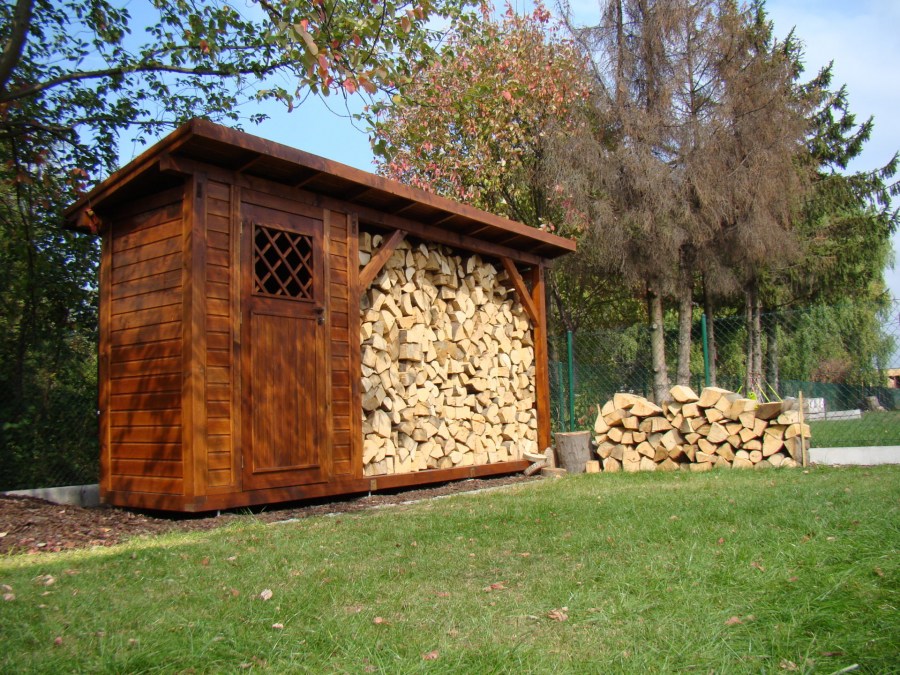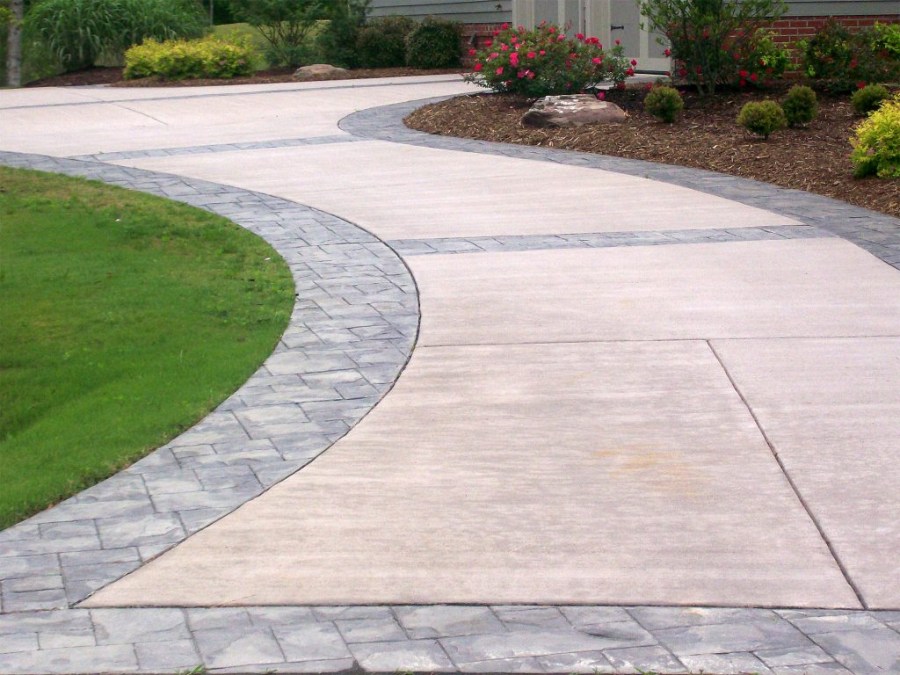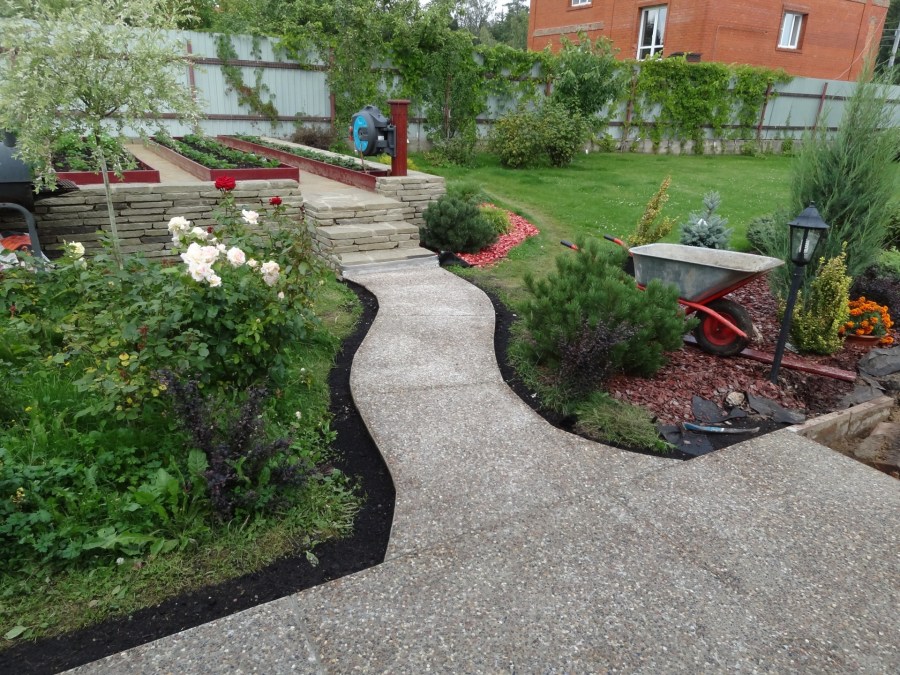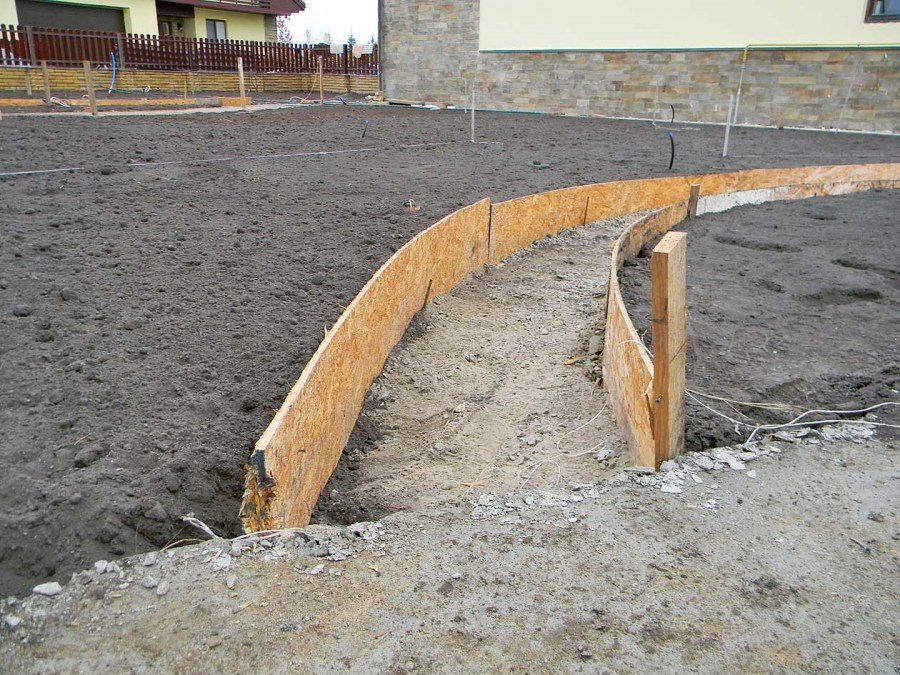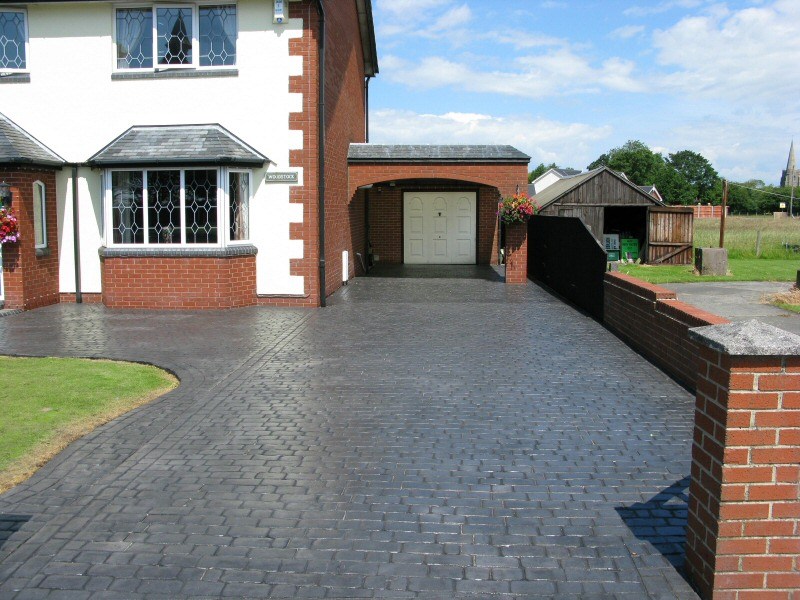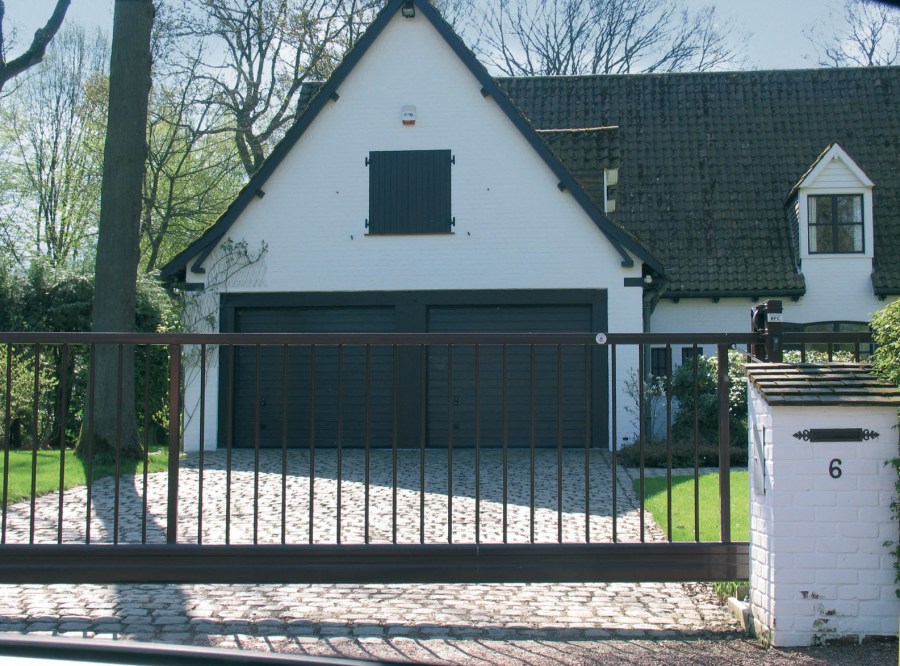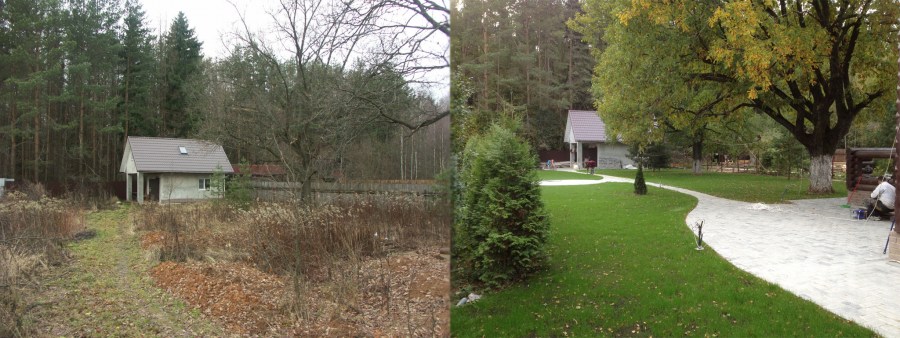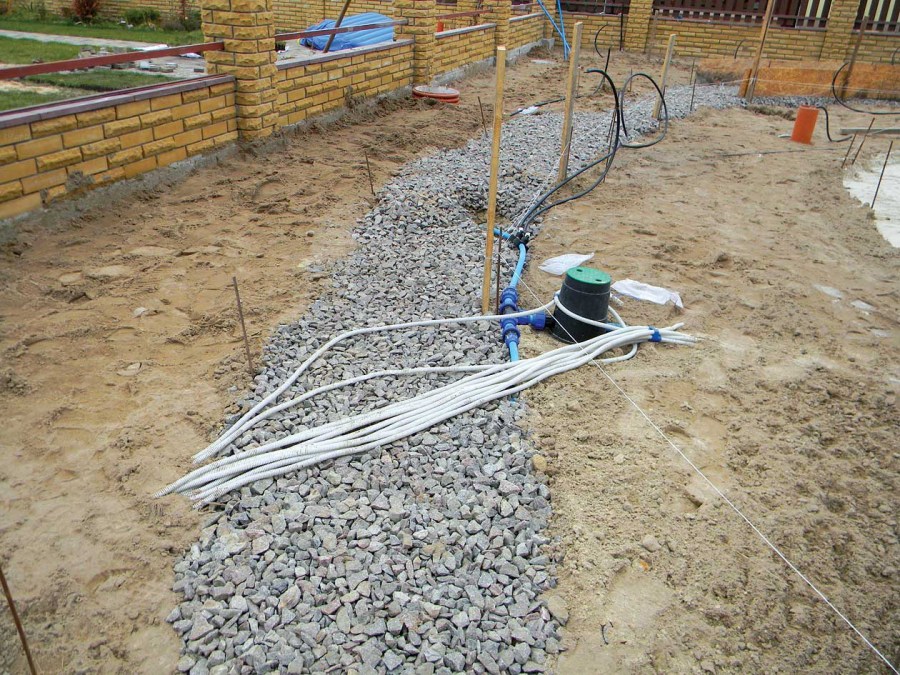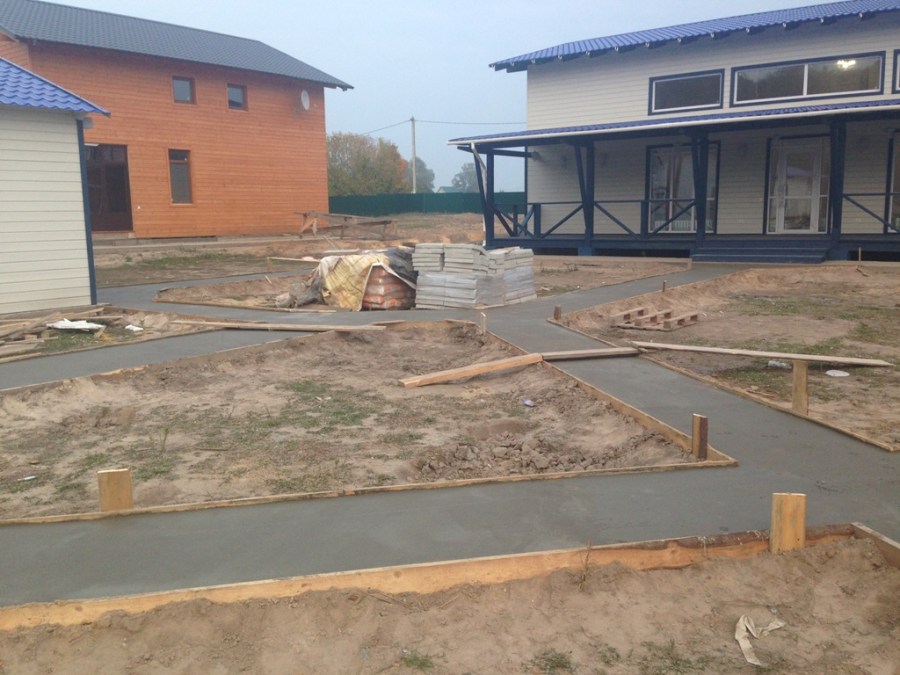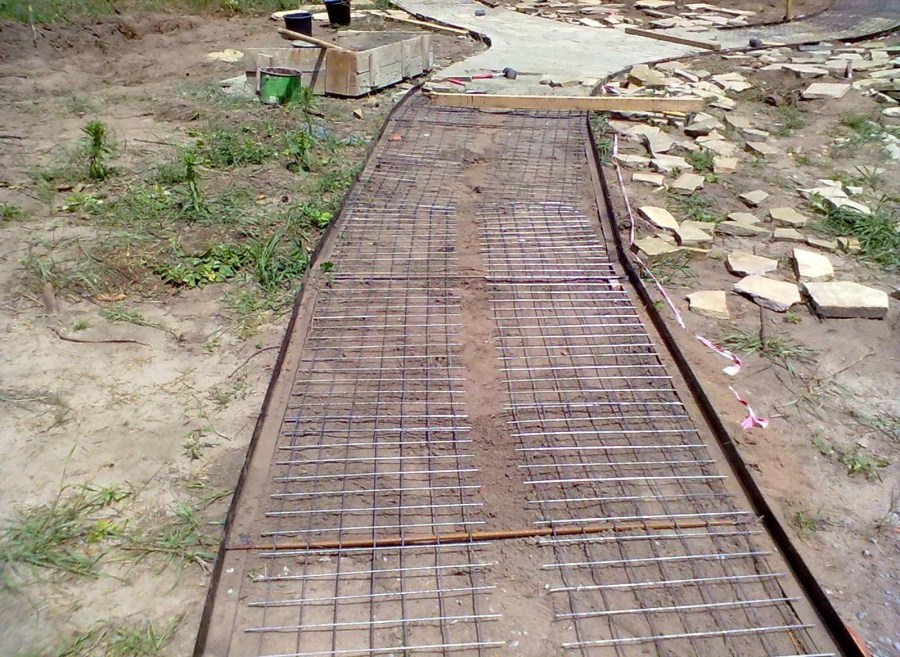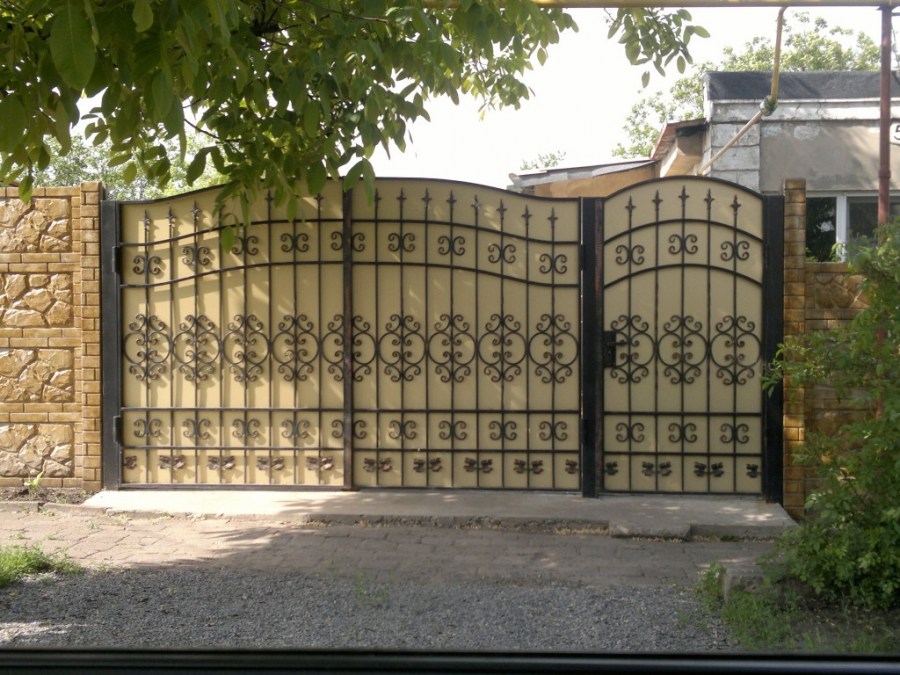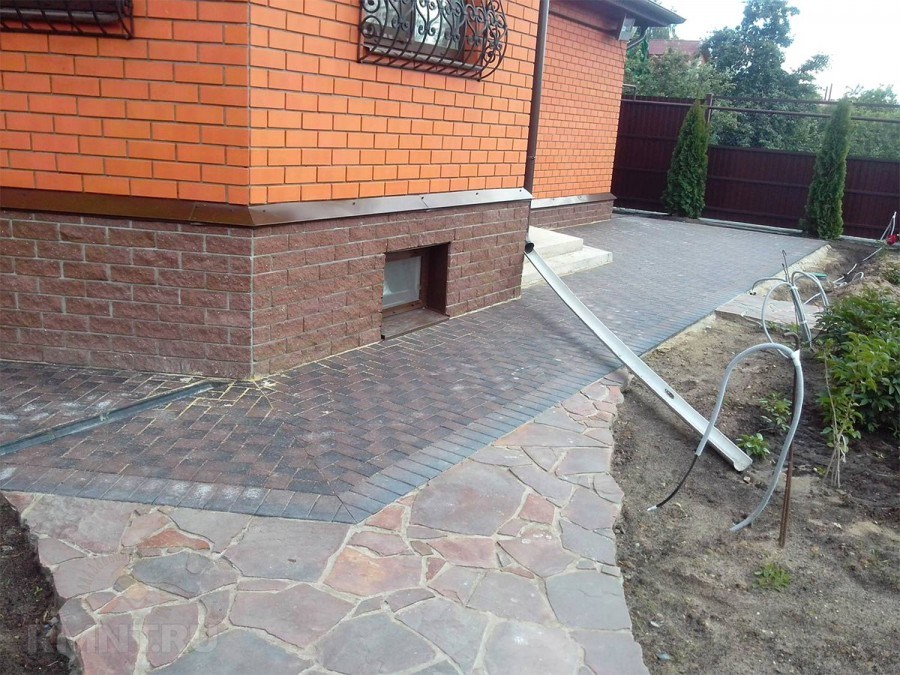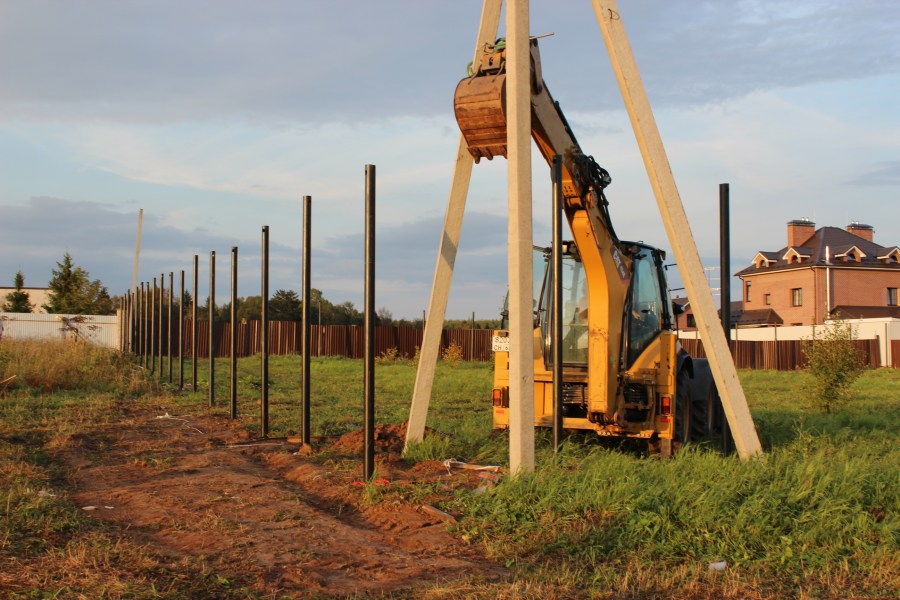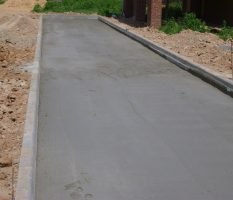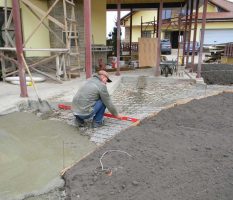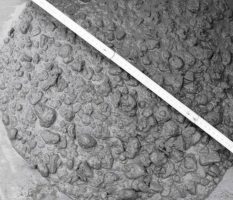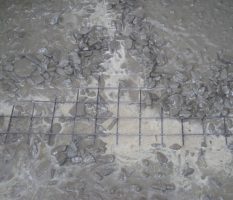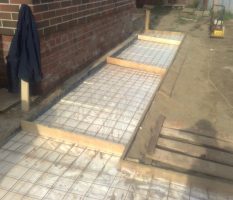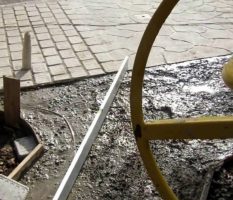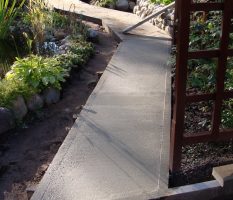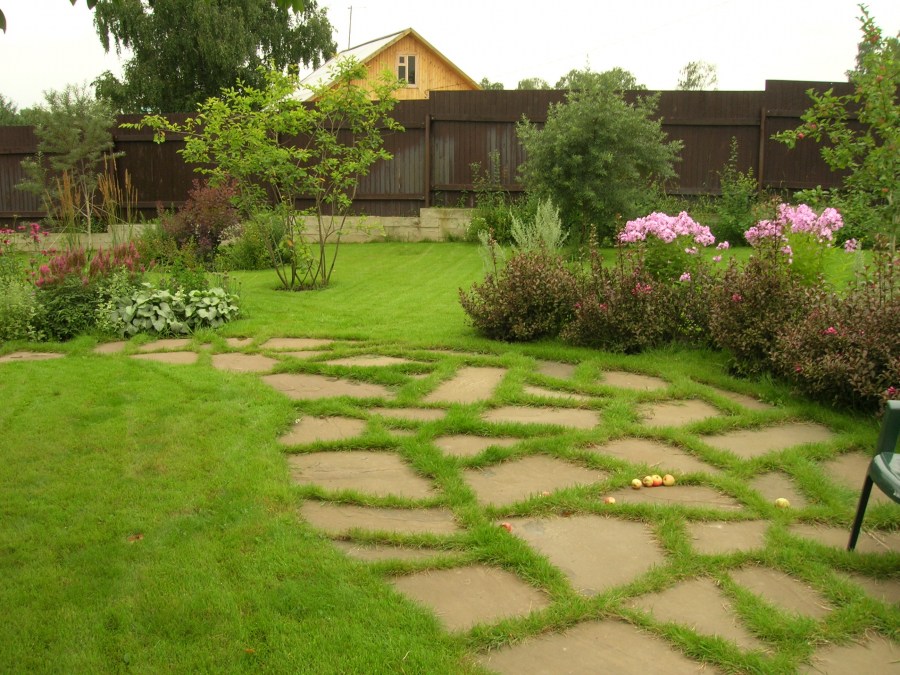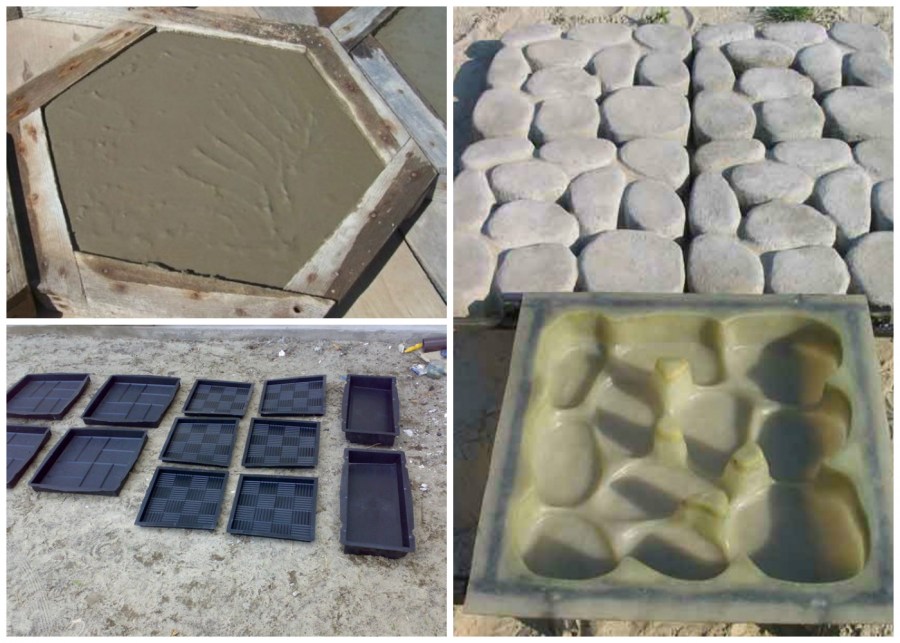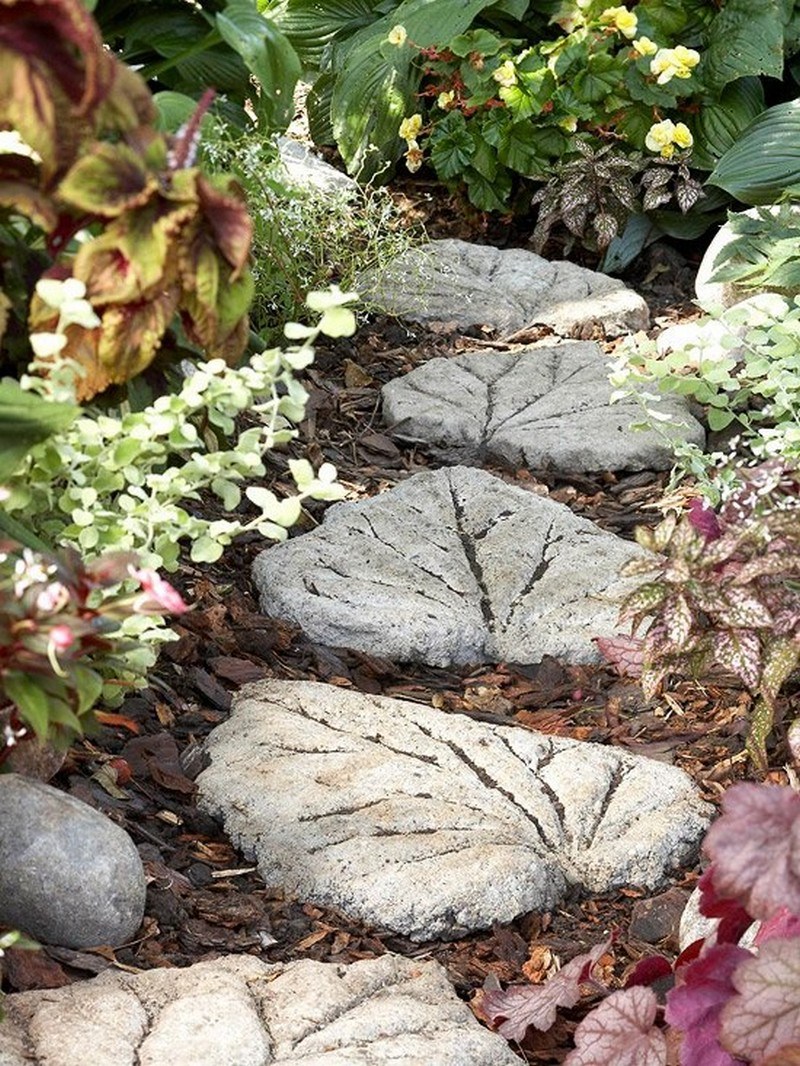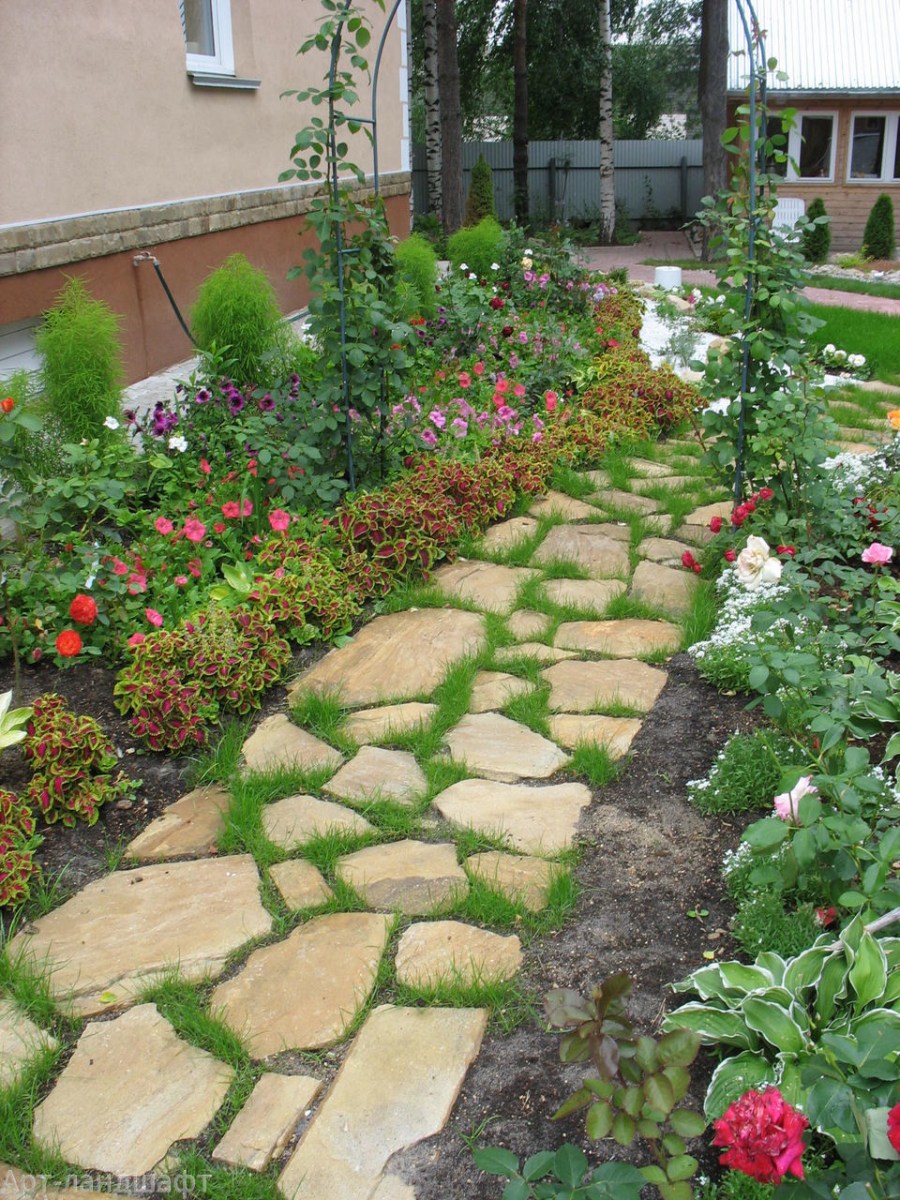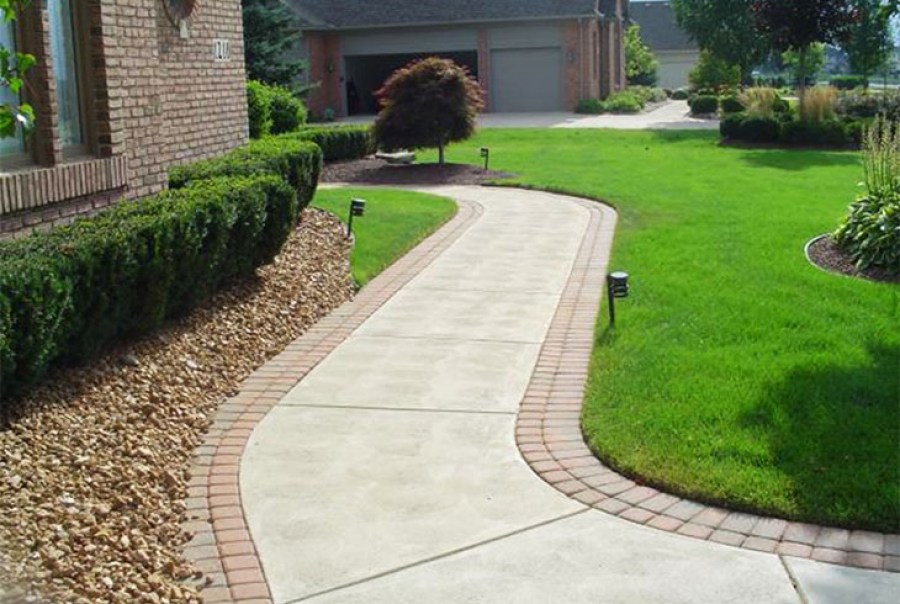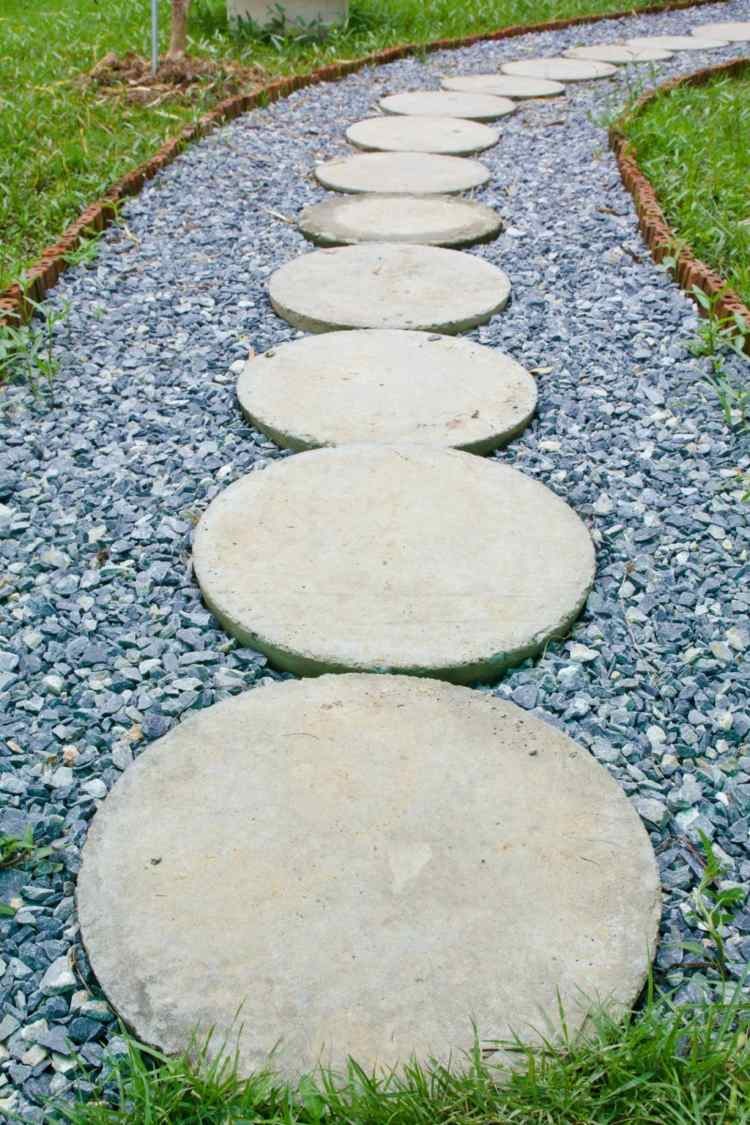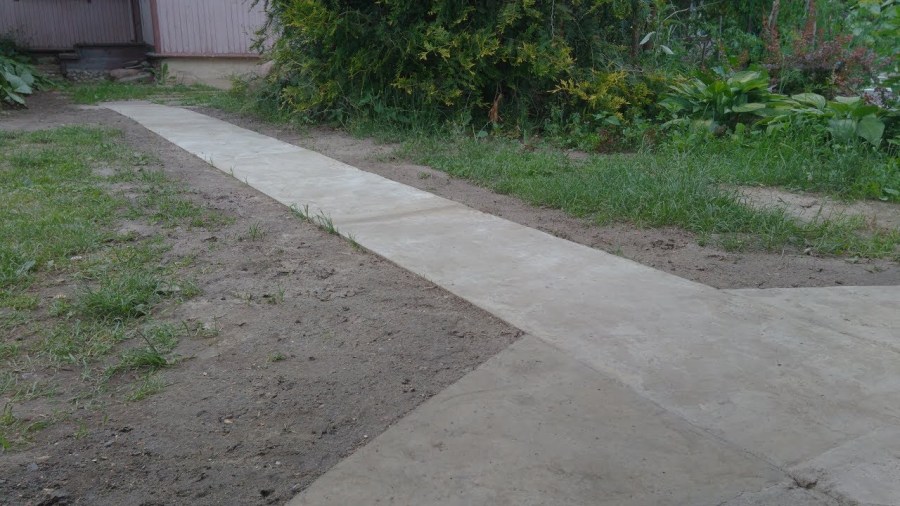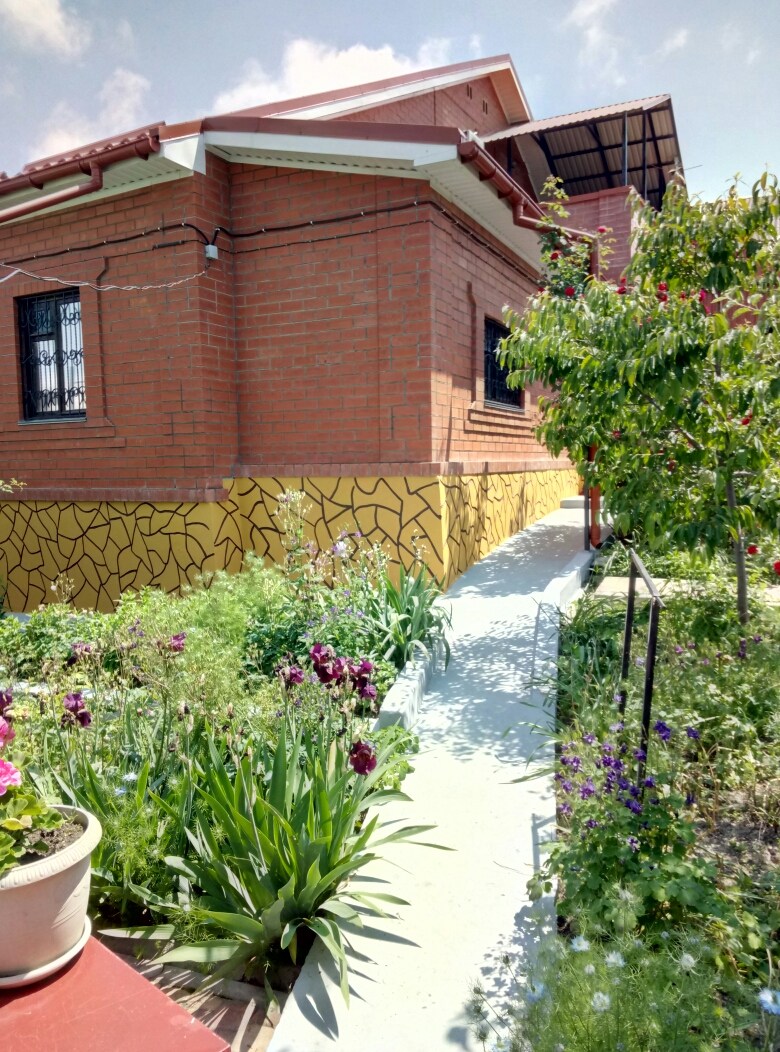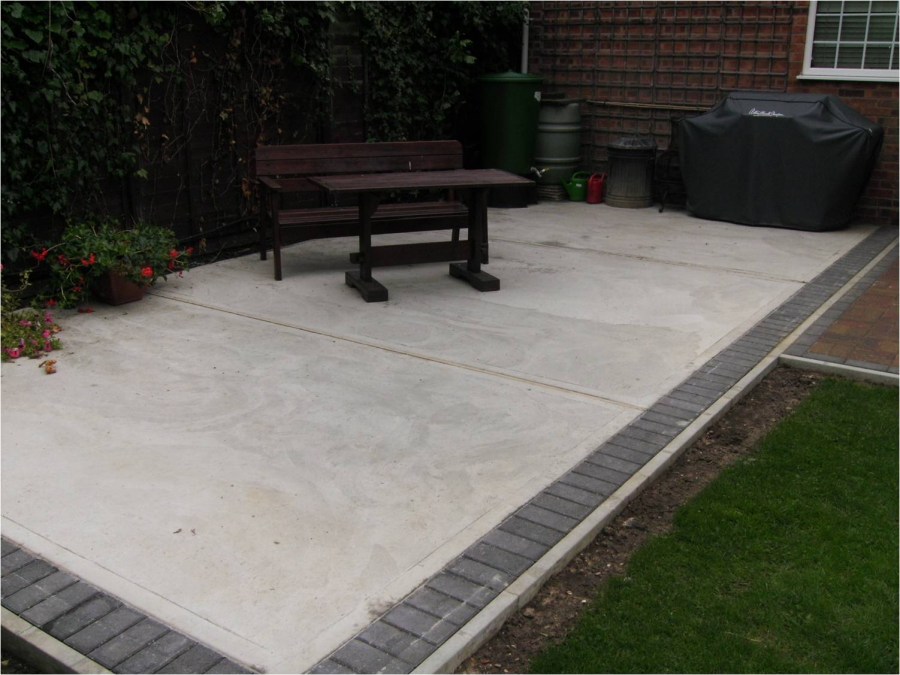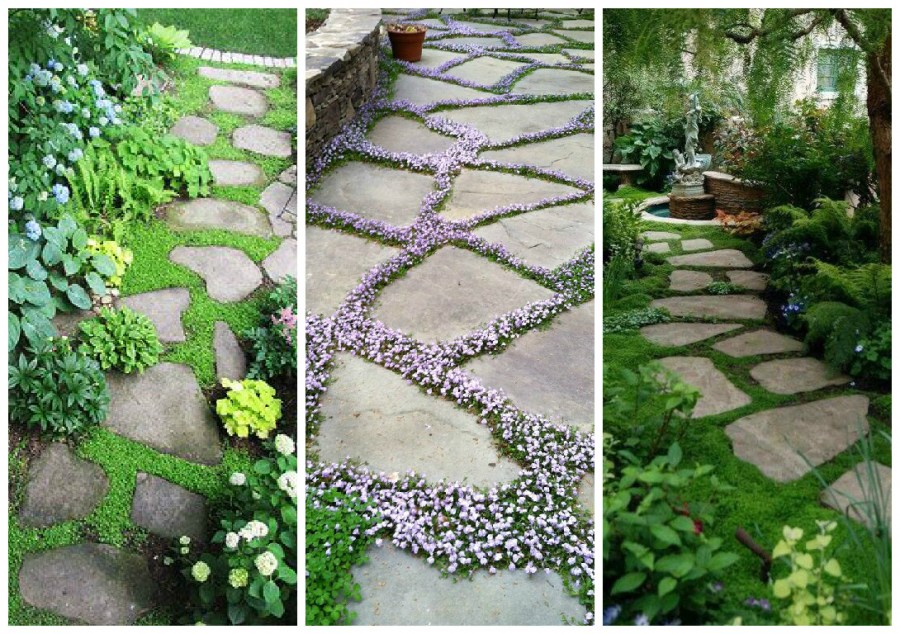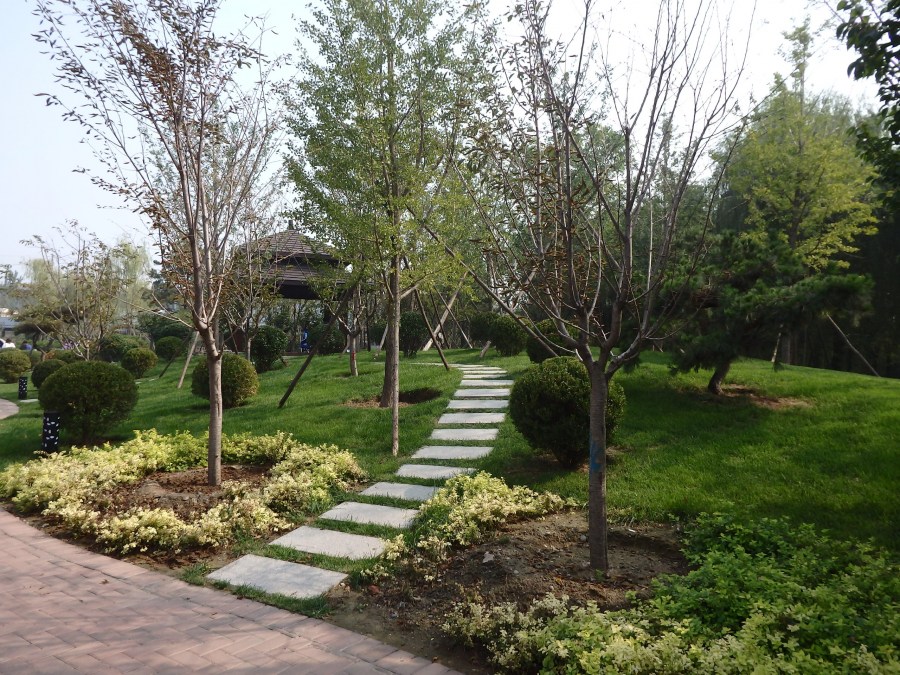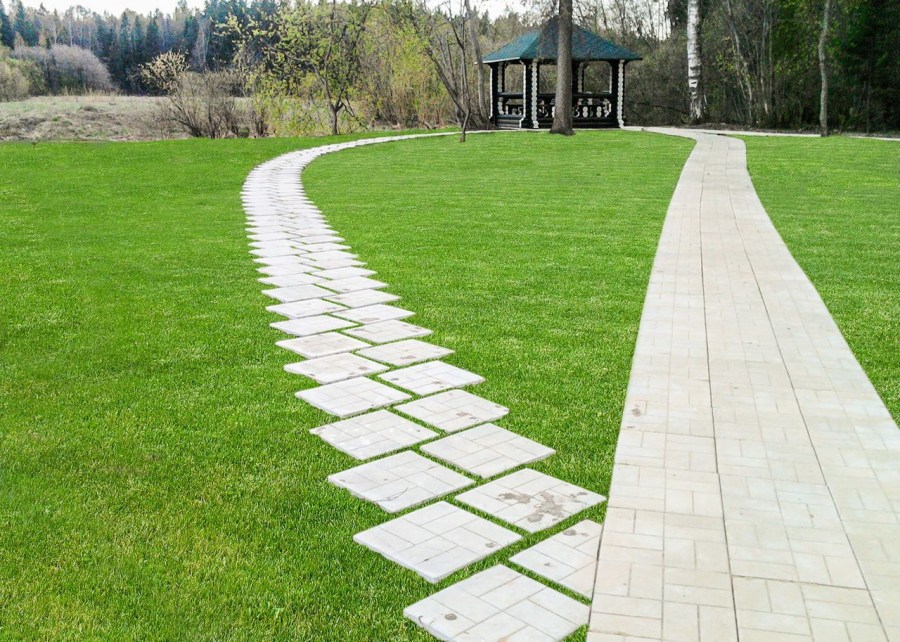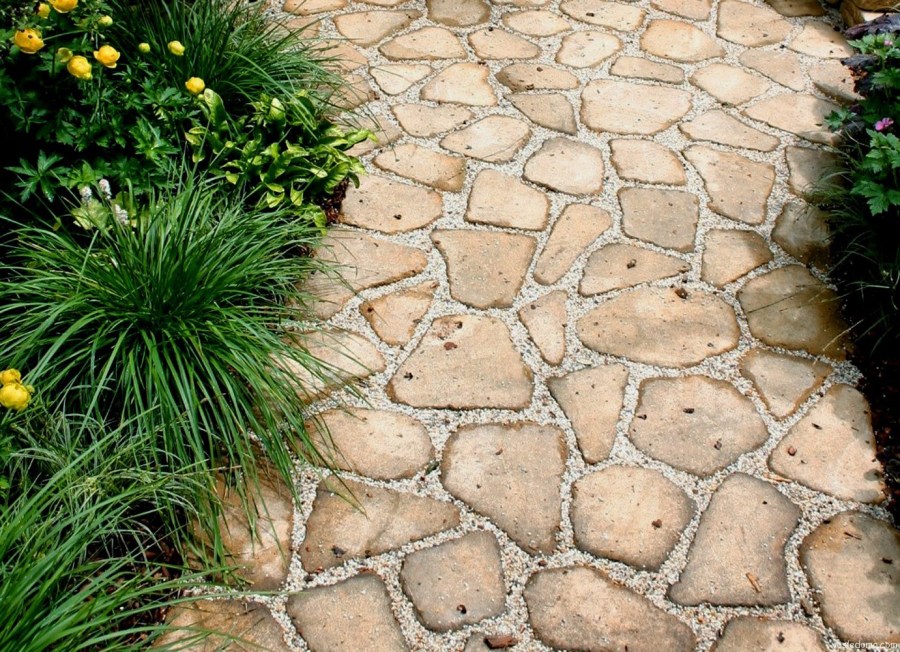Concrete tracks: professional advice and DIY installation instructions (95 photos)
After the construction of the house is completed, its owner will have to solve several more important issues. And one of them is the arrangement of the adjacent territory. Indeed, many of us want to have a shady garden or a well-groomed lawn in front of the house. Therefore, you need to take care of a well-laid walkway leading to the building or connecting separate areas on the plot.
There are many options for solving this issue, but the most durable and not too expensive are concrete garden paths.
Benefits of using
If you want to equip the interior of your site, then concrete paths in the country are an excellent choice. This is explained not only by the ability to build them yourself, without the involvement of builders, but also by a number of advantages of this material.
Among them:
- durability and strength;
- the simplicity of the construction work;
- ease of subsequent decoration using paving slabs or other methods of the owner's choice;
- low cost and minimum effort in the delivery of materials;
- the ability to choose any form;
- water resistance and fire resistance.
You can choose the way to pave the paths in the garden. They can be, for example, direct, connecting certain areas on the site. This option is simple to implement, but you need to clearly calculate the width. At the same time, this solution will not be original and often visually reduces the area near the house.
With paths with bends, you will have to work hard, but often only they can fit into the refined style of the garden interior. You should also take into account the recommendation of designers - the width of the central paths should be about 1 m, but for additional paths such parameters are not required. For them, you can limit yourself to 50-70 cm.
How to prepare the solution
Many people are interested in the question of how to make a concrete path near the house on their own and how difficult it is. The technology for arranging this element of the cottage interior is simple, but a number of nuances are still worth considering.
And one important element in the implementation of construction work is the quality of the preparation of mortar for pouring.
Concrete composition
For the preparation of concrete mortar, it is necessary to prepare cement, sand, as well as gravel. They mix in different proportions depending on how the destination is planned.
For example, for a track that is intended for walking tenants on foot, if it does not experience severe stress, it is enough to observe a ratio of 1: 2: 4.
But if you equip access roads with increased loads on the surface, then you need to increase strength and density. Therefore, when preparing the solution, these constituent elements are mixed in a ratio of 1: 1: 2.
Manufacturing technology
It is important not only to choose the correct proportions of the future solution, but also to prepare it in a high-quality manner. After all, if you decide to lay out the tracks with your own hands, then you should not be mistaken at this stage. Pick up a convenient container and pour sand and gravel there. Then they are thoroughly mixed so that a uniform mass appears.
In it, and you need to add a given volume of cement and mix everything again. And only then the dry mixture should be diluted with water. The fluid flow rate on average is 2-2.5 liters per 1 kg of cement.
Water should be infused as follows. A slide is formed from the dry mixture, in the center of which a recess must be made. They begin to pour water into this hole slowly, raking the mixture from the edges to it.
To simplify the process, you can use a concrete mixer. At the same time, fiber is recommended to be added to the solution, as well as appropriate water-repellent additives.
If you draw along the surface of the prepared solution with a spatula, then the mixture should instantly smooth out. When piercing it with a shovel, grooves will appear, which confirms the readiness of the solution.
Arrangement of a concrete path
The whole complex of works does not require special knowledge and skills. It is enough to prepare the necessary tool and follow the instructions.
Preparatory Activities
After you have decided on the shape and width of the future track, you need to take small pegs and drive them around the perimeter. The more pegs you use, the more accurately you will build a path. This is especially important for sinuous contours. A twine or cord is pulled between the pegs.
Then it is necessary to dig a trench with a depth of 20-25 cm, on the bottom of which an insulating material is laid. Geotextiles or roofing material should not only cover the bottom, but also go on the slopes of the trench.
The laying of this material in the base of the concrete track will help protect concrete from the negative effects of water, and also has reinforcing properties. Drainage is also formed by subsequent backfilling of several layers of sand. Their total thickness should be about 10 cm.
After laying each layer, it must be moistened with water and tamped. To improve the properties of the drainage cushion, gravel is added between the sand levels.
Formwork installation
For the construction of formwork, it is necessary to use boards with a thickness of 15-20 mm. Their width should correspond to the height of the path. In this case, it is necessary to raise the formwork level by 2-5 cm above the level of the surrounding soil and provide for a small clone of up to 1 cm.
Boards should be nailed to the inside of the pegs that were installed as a marking. It is also important to install dividers in increments of 1.5 m. They will divide your track into separate sections. The resulting slabs for tracks will help protect the integrity of the structure from increased load and temperature fluctuations.
As expansion joints, metal plates or siding residues can be used. After the concrete has dried, they can be left there or removed. In the latter case, grease the plates with grease.
Reinforcement
Rigidity of the structure gives reinforcement. For these purposes, you can use improvised materials - the remains of a mesh netting or pipes. But it will be more effective to use a special grid with cells 100x100 mm from rods having a diameter of 8 mm. In this case, garden paths will last much longer.
The fittings should be placed in the center of the future design. It is advisable to fix it using special wire legs or on bricks. Reinforcement allows to reduce the concrete layer to 8-10 cm.
Features of pouring the solution
If you want to learn how to fill a concrete path correctly, then follow our instructions. You need to carry out work in dry weather, choose days with a plus temperature for this. The prepared portion of concrete is poured in full. Then a new batch is being prepared.Do not leave the diluted composition the next day - this will subsequently lead to cracking of the plates.
The mortar should be poured into the formwork to the level of its edges. For uniform distribution of the composition on the surface using a construction vibrator or ordinary rod. Piercing the mixture with a spatula and tapping on the formwork and reinforcement will contribute to a more dense laying of the solution.
The top layer needs to be leveled. To do this, apply the usual rule or a flat board. The bar is placed on the upper edges of the formwork and lead along them like on rails. The solution must be leveled over the entire surface and the excess volume removed.
The track dries for about 4 days, but after leveling it must be covered with a film. This way you can prevent quick drying, which can lead to fragility of the boards. The formwork should be removed after drying - on the fifth day.
Decoration Features
To give the path originality and sophistication, as shown in the photo of concrete tracks, you need to use a variety of decoration technology:
- on dry concrete is carried out with a spatula to give any images, for example, to simulate tiles;
- the manufacture of small recesses in the track with subsequent clogging of soil in them and planting grass;
- glossing by impregnation from liquid glass;
- placement of drawings using plastic molds;
- aging of the surface, etc.
A concrete path for the garden is not only a necessity, a guarantee of the comfort of living in a country house, but also a refined, original element of the garden interior. The material used provides sufficient strength and durability of the structure. And you can build it yourself.
Photo of concrete tracks
Rainwater harvesting: collection, storage and use (120 photos)
DIY waterfall: detailed step-by-step instructions for building (100 photos)
Sauna from a bar - 120 photos of the best ideas: projects, drawings, instructions, materials
Asters - growing and caring for a flower. A lot of photos of the best types of asters + care tips
Join the discussion:
